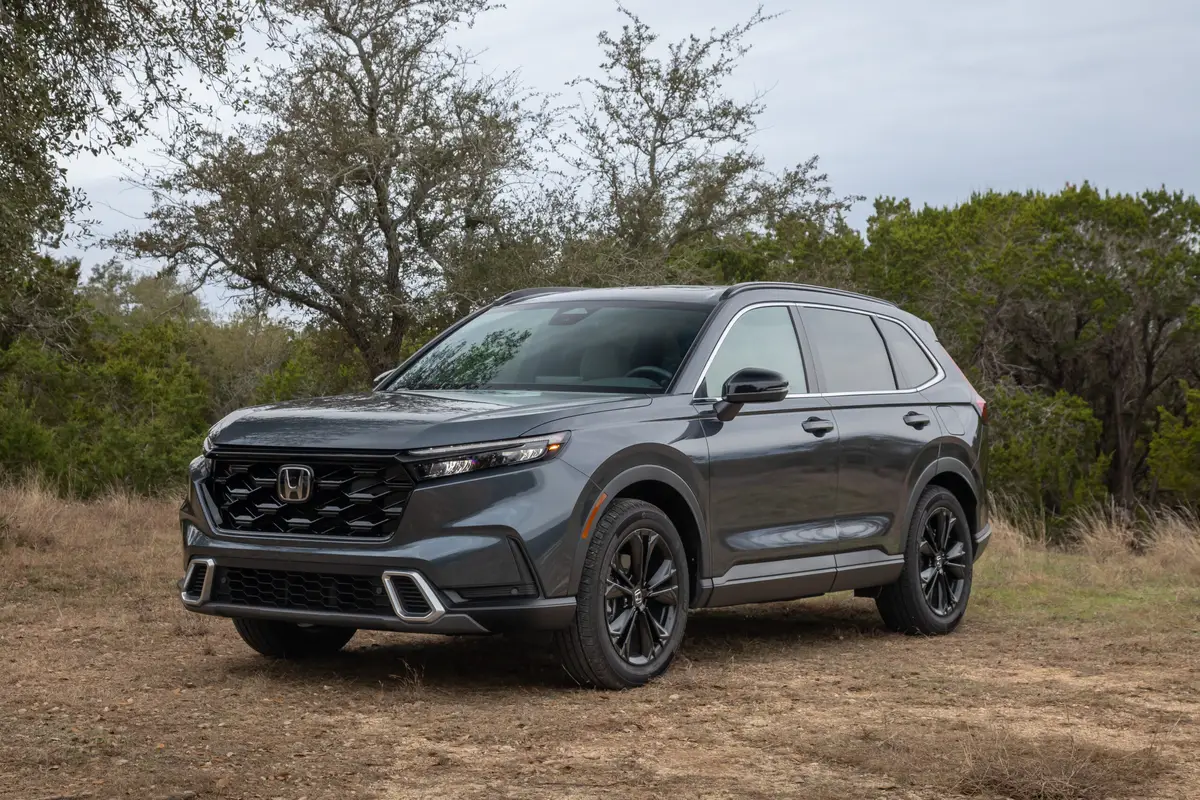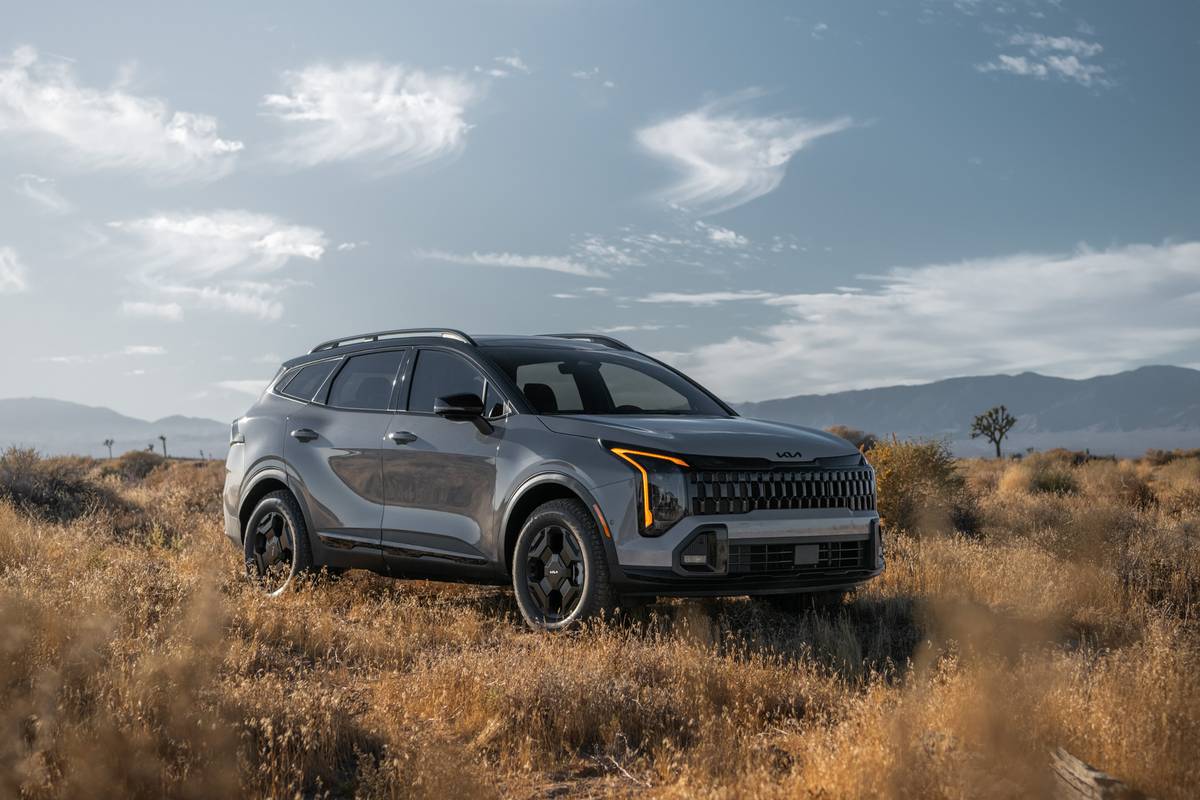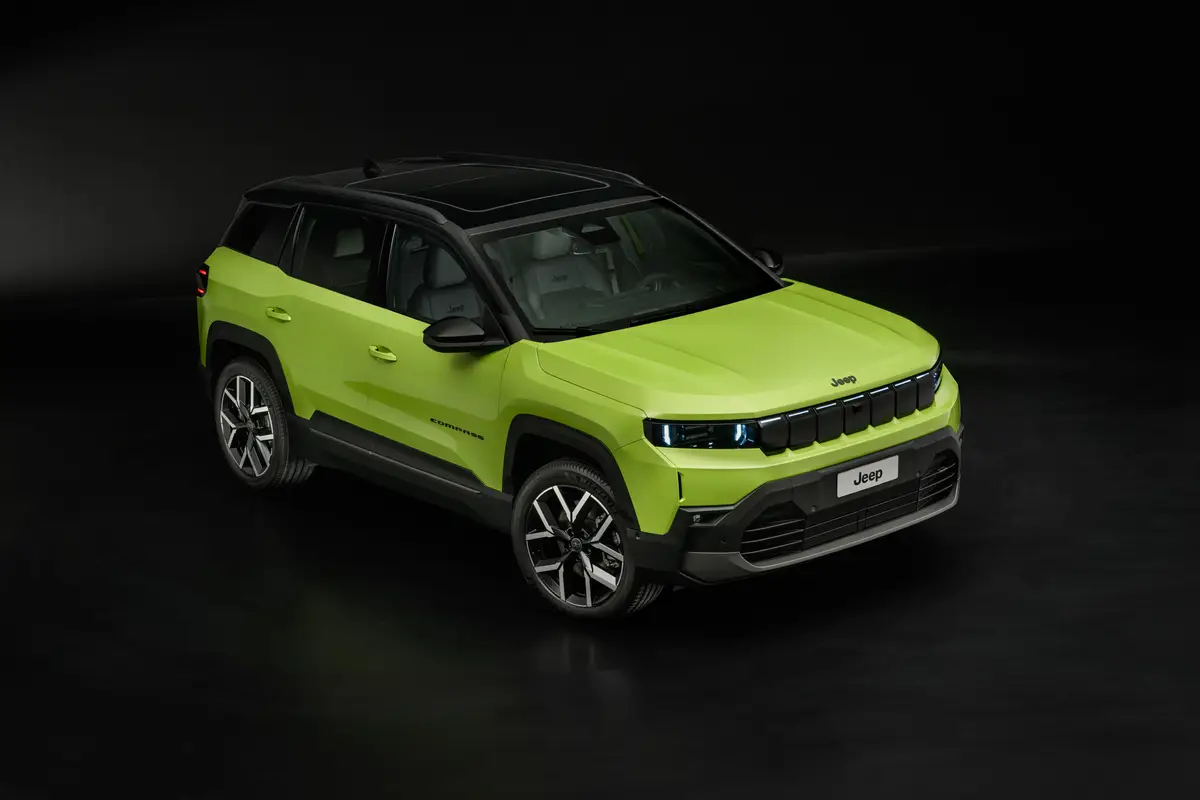Cincinnati.com's view
Released just a week before Christmas, Honda’s latest baby moved right to the top of the list of vehicles I found most interesting in 2002. I am so far from the target audience for this new piece – Generation Y, the 16-24-year-old crowd – it isn’t funny, but I love it. Now that the once-audacious PT Cruiser has overstayed its welcome, the Honda Element is poised to become the Next Big Buzz.
I think Honda is grossly underestimating the breadth and depth of the funkmeister’s appeal. Every time I stopped in a public parking lot, I wound up showing it off to an audience that applauded it (Honda, you know where to send the check).
I first met the Element a couple of months ago in Detroit, while it was still in preproduction prototype form. My jaw dropped on first sight, and I found myself thinking, “That is the ugliest duckling I’ve ever encountered.”
The general public I met didn’t seem to think so – folks from their 20s to some in their 80s praised it as bold and innovative, simple and honest, a nice departure from the mass-market sameness that seems to have taken over the SUV field. One fellow saw it as a miniature Hummer.
Having driven it in final form for more than a week, I still won’t try to make a case for its delicacy of line or rightness of proportion, but I’ve come to appreciate the inner beauty, as with the original Beetle. Honda says its designers spent a lot of time hanging out with young people to ask and observe what they want in a vehicle. It’s apparent that they listened intently.
The kids said they want a big interior, with a flat floor, flexible seating arrangements, a rugged exterior, decent power, good fuel economy and an affordable price.
While there’s much that’s innovative about the Element, as we’ll see shortly, it comes with a splendid pedigree, being built on the same platform as the wildly popular CR-V mini-ute, which itself shares much with the Civic.
Wheelbase is a tidy 101 inches, height 6 feet 2 inches (without surfboards) and interior volume about 130 cubic feet.
Element is offered in two series, the DX, which is spare to allow for customizing, and the more complete EX. Either level can be had with front-wheel or all-wheel drive.
A 2WD DX starts at a very kid-friendly $16,100 (excluding freight). That is with a five-speed manual transmission, no radio, no air conditioning, but includes power front windows, power door locks, tilt wheel, power taps and cargo hooks. It also has the same engine as all the rest of the family. A/C can be added by the dealer, while the wiring is in place for either a dealer or a third-party operation to add a stereo.
Ordering an automatic transmission with either a DX or EX 2WD machine will add $800 to the tally. The AWD versions come only with the automatic. The cheapest AWD machine, the DX, starts at $18,300, while the fanciest, AWD/EX Element starts at $20,850.
Going from DX to EX gets you cruise control, air conditioning, power mirrors, 7-speaker 270-watt AM/FM/CD stereo with subwoofer, overhead storage compartment, driver’s arm rest, metallic instrument and radio surrounds and bulletproof seat coverings front and rear (DXs only have it in front).
The AWD mechanism costs about $1,400 and includes a flip-up/removable 20×30-inch skylight over the rear compartment.
In any event, the floor is covered not with carpet but with a rugged thermoplastic material like that used as pickup-truck bed liners. It’s seamless and looked impermeable, although Honda does not go so far as to say you can hose it out. A rainy day allayed one of my concerns by demonstrating that the stuff is quite grippy even when wet. Loose objects will fly around, though, but that’s what cargo hooks are for.
The Element is a four-seater. The rear seats are split 50-50 and can be flipped to the sides of the vehicle or removed entirely without much difficulty, I found. The interior can then accommodate such things as a surfboard, mountain bike, skis or the boring stuff we old fogeys tote around.
As you can see in the photograph on the next page, the one thing Element lacks is a “B” pillar, the upright member usually encountered behind the front door. This allows both doors to open wide – in opposite directions – and swallow a wide load or just let the ocean breeze flow through, dude. As in some pickups, the rear door can be opened only when the front door is open, a feature moms will find comforting.
There is also a two-piece rear hatch, with flip-up glass and flip-down tailgate rated to hold 440 pounds, making loading the beast a snap.
Large old guys (I know whereof I speak) will find the rear seat a bit confining, but the front affords enough legroom that I was able to pull the driver’s seat forward a couple of inches to oblige rear passengers.
The vehicle they sent for my test was a 2WD DX with 5-speed manual transmission. It was one of the first off the line in East Liberty, Ohio.
In that form, it weighs 3,330 pounds. Propelling it – and all its brethren – is the same engine used in the CR-V, a 2.4-liter 4-cylinder jobbie. It makes a maximum of 160 hp at 5,500 rpm, and 161 foot-pounds of torque at 4,500.
Thanks to Honda’s clever variable valve timing, there’s good response from about 1,500 rpm up to the 6,500 redline.
With that weight:power ratio, the Element is no neck-snapper – you can forget about breaking the 10-second barrier in a 0-60 mph sprint. The combo I had figures to be the liveliest of the family, and for most situations it was quite peppy enough so long as my gear choice allowed the engine to spin at 4,500 or more. No problems merging onto freeways or climbing steep grades. I’ve requested an AWD machine (3,577 pounds) with automatic to satisfy my curiosity, and will let you know when I’ve “done” it.
The five-speed is excellent; the shift lever grows out of the upper part of the console, which seems odd until you use it, and then you wonder why they don’t ALL do it that way. The unit was reasonably precise and clutch action was fluid enough for beginners.
Handling was very good, too, for a front-driver, with enough juice to break the front tires away on standing-stop burnouts and just a leetle torque steer on very heavy throttle. Ride quality is quite similar to that of the CR-V, which is to say very agreeable. It absorbed minor road imperfections before they got to the cabin and didn’t get all flustered by the big ones. At freeway speeds it was moderately quiet and, perhaps surprisingly, absent the B pillar, tight and rattle-free.
Handling is good, though in a heavy rain I was wishing for AWD. On dry pavement, the Element tracks well and goes where it’ s pointed with little roll and no fuss. Steering on all levels is variably power-assisted.
The Element has 16-inch wheels, a notch bigger than the CR-V’s, and they’re shod with 215/70 all-season rubber.
Working in concert with four-wheel, ABS-assisted disc brakes, they produced creditably short stops, albeit with a somewhat mushy pedal feel.
Neither Feds nor insurance folks have crashed any Elements yet, but the CR-V progenitor got top marks from both agencies, for what that’s worth, and Honda says its simulations show Element will ace them both, too. Dual-stage front air bags are standard. Optional side air bags will be added later in the model run.
EPA ratings are 21 mpg city, 25 highway with the setup I tested. (The worst, AWD + auto, is rated at 21/24.) I logged 22.7 overall in city and suburban running, with a bit of freeway flying thrown in. Regular, 87-octane gas is all that’s required.
Assuming an absolute base model with delivery charges, payments would come to $333, assuming 20 percent down, 10 percent interest and 48 monthly disbursements. Edmunds.com finds that the average buyer, at the beginning of the model run, is paying a few hundred bucks OVER sticker. Hope those folks in East Liberty are up for a lot of overtime.
Latest news

2025 Honda CR-V Hybrid Review: Popular for Good Reason


